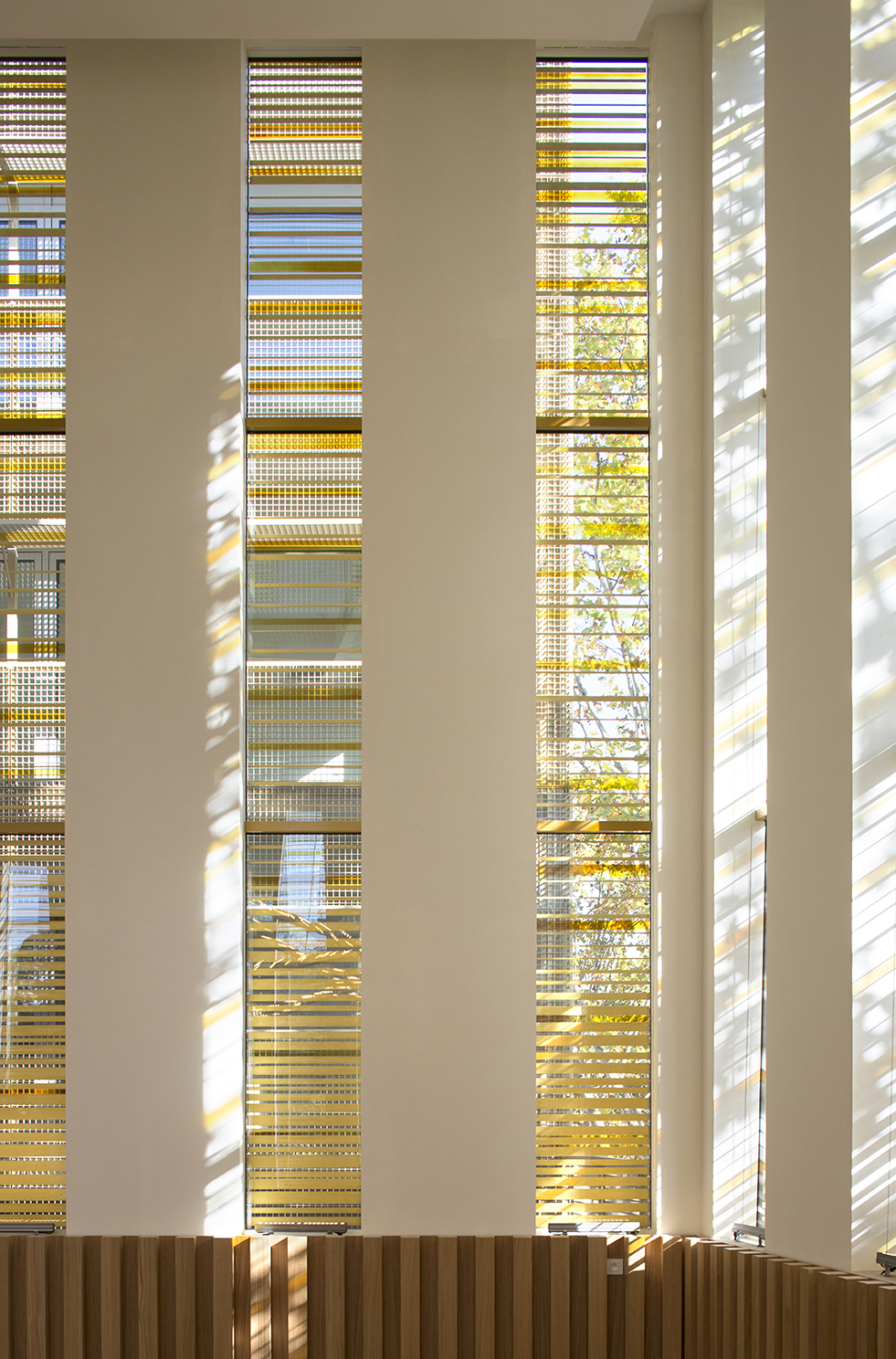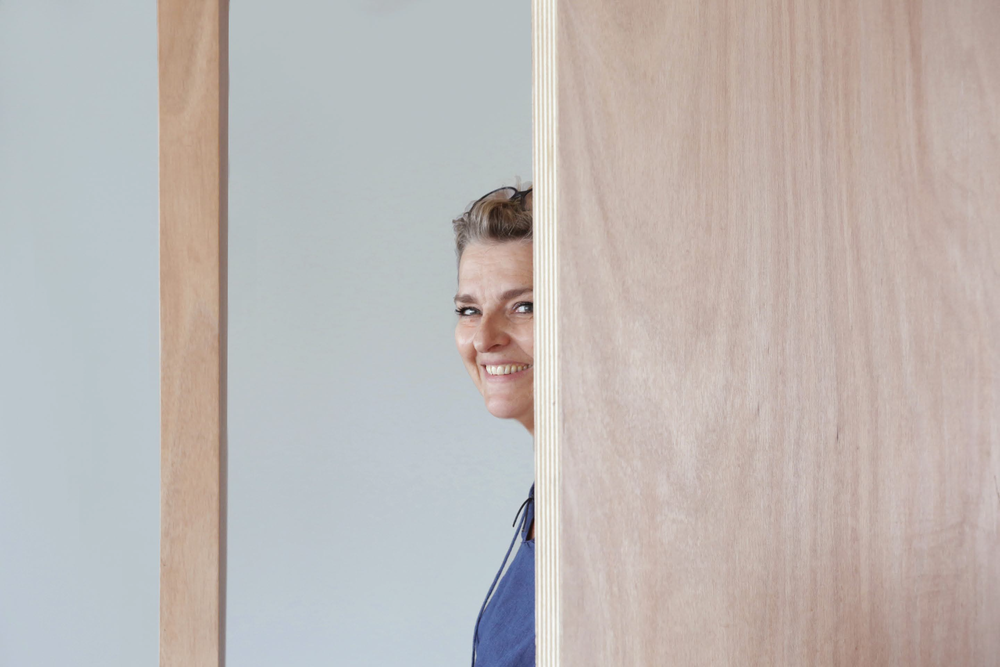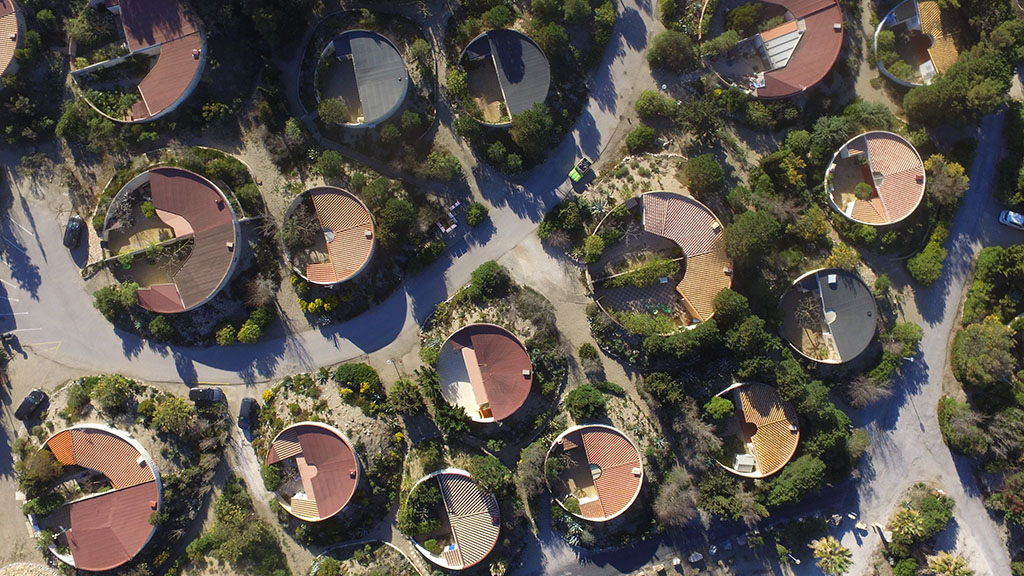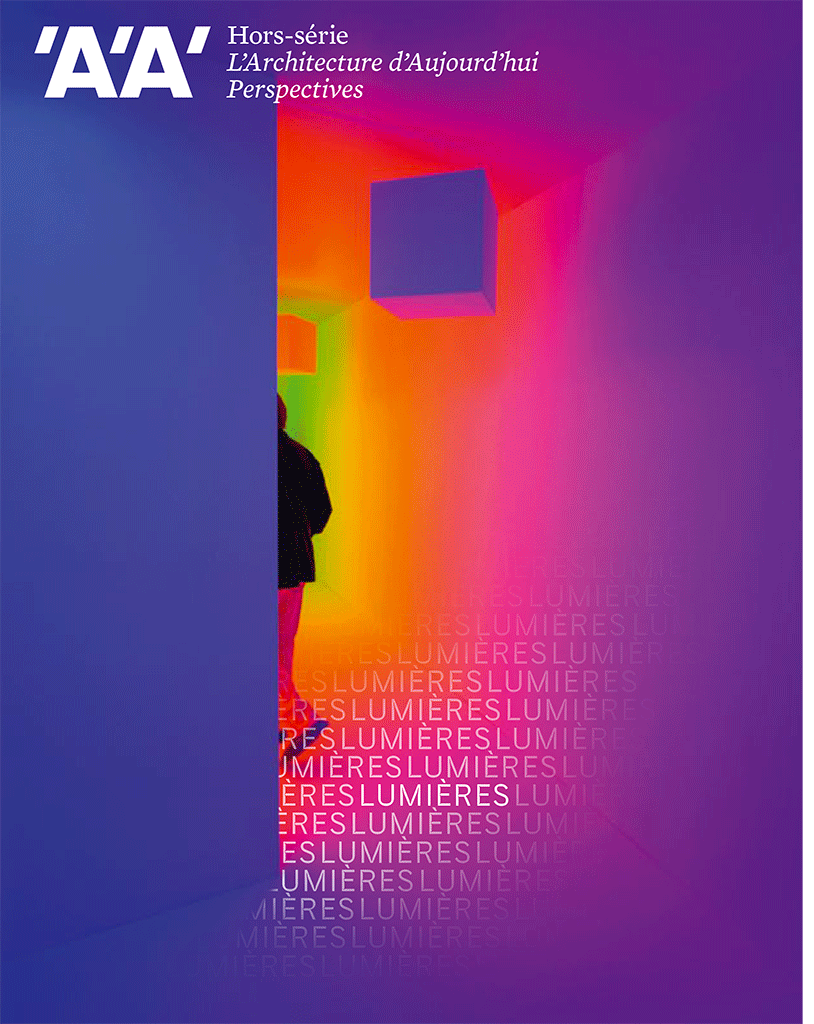In the eyes of Rémy Marciano
From October 11 to November 4, 2020, the Galerie d'architecture (11 rue des blancs manteaux, 75004 Paris, France) presents the exhibition “Architecture is a territory” dedicated to the work of architect Rémy Marciano. On this occasion, L'Architecture d'Aujourd'hui publish a special issue of 144 pages (available on our online store) from which the following interview is taken from.
Everything is a question of perspective. According to Rémy Marciano, the architect must be a curious and sensitive figure. Open-minded and erudite, he sketches his own theories without distorting the truth, or constraining them with dogma. The product of seemingly free thinking, his statements lay the subtle foundations of an art of building deeply rooted in the territory.
Interview led by Jean-Philippe Hugron
This publication grew out of a project for an exhibition at the Galerie d’Architecture in Paris. What was the idea behind this initiative?
It all started with an invitation from the Galerie d’Architecture. I took it as a personal challenge because it is not so simple to talk about one’s work, or easy to summarise one’s approach. Thus, the preparation for both this event and the publication have allowed me a break, time for myself, time to think, and to further develop the theoretical dimension of the firm’s officies work, which is only more indispensable as it is directly related to built works. An exercise like this involves deep introspection to find the reasons that drive us to “make”, to commit ourselves to our choices. To understand the process of conception is also to rummage through our feelings, but especially to evoke and to reinterpret what the authors and artists who have inspired us are saying. Their thoughts and works accompany us and resonate with our own questioning. They help us to freely prepare the groundwork for our creations.
Given these circumstances, what does it mean to be an architect?
More than being an architect, “becoming an architect” is about one’s sensitivity to things. A way of seeing the city, landscapes… I have always been sensitive to the environment where I live, always allowed myself to be moved and touched by it. Architecture has merely enabled me to place myself on the other side of the mirror in order to participate in the development of territories.
What do you mean by “territories”?
There are territories that support and nourish. We are interested in fragile zones too. All are starting points for a project. They are all “sensitive markers”. There are of course cities that beautify everything; Florence or Algiers for instance. I have an intimate relationship with the latter as my parents came from there. Arriving in France in 1962, they left behind them a Mediterranean way of life whose stories of huts on the beach and roof terraces lulled my childhood as much as their happy multiculturalism. There is also a second more domestic category of lands, which belong to everyday life or of boredom. These are the lands where I grew up, of housing developments and city’s entrances, which as much as the first category enkindled in me the desire to become an architect. Moreover, I still appreciate literature that explores daily life… All these authors who, through a patient process of construction, seek ways of arousing desire. I grew up in the south, in Mandelieu, in an “ordinary” area: a housing development where, with my parents and my brother, we completed the house’s surrouding area. This earliest contact with concrete was a revelation for me. It was this environment that nurtured my desire for the city. And, as I had no access to beautiful surroundings, plunged in reading first and later escape through travel. Still, I never entirely lost my feelings of affection for these neglected areas of the metropolis. Later, the Beat Generation spoke to me about them: John Fante, Jack Kerouac… all those authors evoke the periphery and the suburbs. Italian cinema, heir to the neorealist movement, is not stingy either as it too drew largely from these situations.
So, what did Marseille represent for the young student recently arriving from Mandelieu?
Marseille is an encounter. I only knew Cannes well, a city of artifices dominated by the exceptional landscapes of the Massif d’Estérel. Cannes was built based around the gaze of others. The festival, the cafés, the Croisette… There is something there resembling a mirage, an illusion. In Marseille, I was living in a real metropolis. Here, the poetry of the city is writ large. I lived at the Cité Universitaire de Luminy at the time, where I joined my brother, also an architecture student, who introduced me to this Mediterranean metropolis. That was in 1986. The Mayor Gaston Defferre, a builder, left a mark inspired by modernist city-making. The motorway was reaching the town centre, multi-storey car parks were rising on the Place du Cours d’Estienne d’Orves and the corniche was overhanging the sea. I was fascinated by the city’s radicality. It awakened a previously buried Mediterranean identity in me. It was during this period that I discovered the city, life, architecture and an entirely unfamiliar environment. I was frequenting Fine Arts students, went to parties held in bunkers, very different from any I had attended before. This is when I developed a circle of mates: José Morales, “an architecture brother”, Christophe Hierro, Laurent Guenoun; the teachers who opened my eyes Raymond Perrachon and Jacques Sbriglio – who later became my colleague and friend at school – Rudy Ricciotti, who with José accompanied us for our diploma and who taught us another perspective, a poetic radicality that fascinated us. I have still more architectural friends: Matthieu Poitevin and Jérôme Apack with whom I shared projects and Kristell Filotico and Christophe Migozzi, with whom I maintain an area of study for a Master Architecture titled Process and Sharing at the ENSA Marseille.
Didn’t studying architecture at Luminy, isolated from the city but at the heart of modernism, have an impact on a young practitioner?
Living in Luminy means accepting a life cut off from the city, which immerses you in the discipline of architecture far from the city’s temptations. That was surely the goal of this model campus, designed in the ’60s to park all the troublemakers in a pasture. Back then, modernity was a necessity. The mechanisms of rapid construction made it possible to meet the needs of reconstruction followed by the massive arrival of populations escaping North Africa. This heritage shows how we shifted towards another way of thinking about the city, both radical and revolutionary, whereby functionalism became a limit we suffer from even now. Criticism of this attests to the yoyo effect, which sees each decade reject the prior one. I personally see this as a story of successes and failures, but also one that made the city of today.
Having perspective with regard to the “yoyo” effect of criticism remains a difficult exercise given the extent to which everyone is conditioned by what is fashionable. How do you free your eyes from these shifting moods?
The recent history of architecture shows us how each generation has sought what was supposed to be the right attitude to adopt, each time thinking it was reinventing the best. I much prefer to study photographs. Clichés are sources of precious learning that teaches us to see what we do not yet see. Every year, I attend the Rencontres de la Photographie in Arles, and a while ago I saw the Levitt France, une utopie pavillonnaire exhibition. It allowed the French public to learn about the history of an American housing development. The underlying question asked was the one of the model one chooses and uses, but only partially, leaving out the essential (facilities, public and shared spaces) because the decisions were above all dictated by the profit motives. When the interest of an investment is more important than any other consideration, catastrophe quickly follows. Bruno Fontana – who was also at this exhibition – works as an artist inventorying these detached houses. He makes these zones – which are openly discredited by almost everyone – particularly interesting. He depicts their imperfection but also their fragility. Better still, he shows how the inhabitants manage to bring a personal touch to the very heart of repetition. It is life, affirming itself, every time, much stronger. Talking about this subject reminds me of the book published in 2012 by Actes Sud, Marseille, ville sauvage by Baptiste Lanaspeze. With his camera, Geoffroy Matthieu, whose photographs illustrate the text, captured a hybrid territory destined for industry. Successive crises have slowed the momentum of these territories, which have remained sloppy and depopulated. The “wilderness” he talks about are these voids left between the grand lines of the city, such as motorways for example, another indelible part of the metropolitan condition of the city. They create, among other things, sublime “cinemascope” sequences of the sweeping landscape of Marseille. I see the recognition of invisible typologies, both in his work and that of Bruno Fontana. It is an extraordinary eye, particularly well developed, that highlights the visual power of repetition. Nothing is ugly. It is merely another form of beauty. In sum, a good photograph plays on its sensitivity to reveal unknown, peripheral territories, often cut off from centres.
So, “Ugly France” might not be that ugly?
There are certain zones that accumulate the stigmata of these unattractive, neglected places from whence life has partially withdrawn. It is up to us to approach them like these young people who know how to bring objects back into fashion, and ways of dressing. There are no hopeless cases. Little transformations can shift everything. A few years ago, the Bombarda district in Porto seemed like it was still destined to a fate of boredom and abandonment. Since then, it has become the refuge, “ugly” as it may be, of Portugal’s creative youth. The place has become a fascinating hub of experimentation. It is not enough to denounce. To stage new forms of architecture, one must first look at situations with sensitivity, at this ugly France, for example. Undoubtedly, we must come to see things with the eyes of Jacques Tati. His films plunge us into a satirical aesthetic of modernity. They tenderly hesitate between attraction, fascination and regret. His feature films teach us to see such dualities as a wealth of riches, inviting us to accept the city’s overlapping logics, its strata forming joyful collages.
Is a good architect a good photographer?
A good architect is first and foremost someone who uses the project to reveal a territory and a city. This exercise is of course filtered through the keenness of his way of seeing. It was undoubtedly Aldo Rossi who most required the skill of observation from architects. His analogous city was precisely a collage of typologies borrowed from architectural heritage, from the farms of Lombardy and Piedmont, as well as the bathing huts along the coast of the Adriatic, to mention only a few.
What inspiration do you draw from the Tendenza?
Though the interesting works actually built by Aldo Rossi are limited in number, there are a few enjoyable ones, like the cemetery in Modena and the Teatro del Mondo, the ephemeral structure built for the 1980 Venice Biennale. Aldo Rossi, the spearhead of this movement, emphasised the importance of the pre-existing – the already there – and of projecting from our own territory. I understand all that as an invitation to make use of the existing but also of one’s own experience. In other words, building is tantamount to composing with a territory based on a personal history. So, it is about remaining curious through one’s gaze in order to continuously nourish sensitivity that evolves over time and with one’s age. Teaching helps in this regard because it enables me to keep alive the need I feel to link theory and practice. The Venice Architecture Biennale is also an important moment. I remember being impressed by the Gabinete de Arquitectura, a Paraguayan firm, Lion d’Or in 2016. On this occasion they had presented a simple vaulted structure. Their remarkable architecture was built with just one material and a great deal of talent. They are unparalleled designers and builders who work in countries ravaged by corruption where facilities are weak. Such situations challenge the role of the architect. In what are occasionally epic circumstances, he can even become a heroic figure. This is far removed from competitions in France and questions of attractiveness and image underlying them. I appreciate the commitment of architects, the strength of conviction with which they design their projects and draw from local know-how.
Isn’t this possible in France?
What is keeping me from acting here? Often it is the regulatory framework that restricts architecture in the extreme, defining everything, even the size of openings, thereby impoverishing the way we practice our profession. Furthermore, let’s not be mistaken: we have many more things making our task far less heroic than theirs.
Patrick Bouchain more or less demonstrated the same thing. Is he not also a heroic figure?
Patrick Bouchain has understood how to work upstream from the commission. He even managed to dismantle processes, in addition to having imagined the function of building user representative, who recentres the project on its users. He is one of the first to have restored craftsmen to a place of honour. There is something of the Arte Povera artists in this approach that I find charming.
He turns standards and rules into a material for architecture. What about you?
At first glance, rules constrict us. You have to master them to be able to extricate yourself. That said, “transgression” interests me. I gave a lecture on this subject and even delivered a course. How do architects become “borderline” with rules? The art of walking this tightrope is, in my view, a source of excellence. So, it is incumbent upon the architect to find and to imagine new processes for building a project. It is as important as being a good draftsman.
How do you deal with risk?
I always come back to this theme of the ’60s and ’70s. The aim in this period of exploration with Archigram and Superstudio was to break codes, abolish barriers, brazenly open things up, explore new worlds in every domain. “Forbidden to forbid” called on the people to become responsible for themselves. Nowadays, everything is regulated and one risks becoming limited. Today, a good project is, from society’s perspective, one that fits perfectly within the regulations. Under these circumstances, working on the fringes of the territory and on the limits of the brief opens spaces for freedom and appropriation. It is one of the key themes of architecture. It is perhaps even this that betrays the architect’s engagement. To design a project well – whatever the regulations might be – means to allow everyone who lives in and uses it to flourish. For that, one must create surprises and imagine spaces of sociability.
Would that also be the Freespace concept advocated by Yvonne Farrell and Shelley McNamara, curators of the 16th Venice Architecture Biennale?
Yes, also. However, in that proposal I saw a negative critique of the merchant city in the process of privatising its spaces, a city that is limited to the practice of consumption. Freespace is open, freely accessible space. The 16th edition of the Biennale was a call to think about new uses. The making of the city must not be dictated by the interests of investors but rather by the creativity of the people. Yvonne Farrell and Shelley McNamara are pursuing a genuinely political approach.
And yet, does an architect have enough power to lay claim to a political approach?
An architect is engaged. May ’68 brought architects out of their ivory towers of academism. At the same time, this movement participated – as the french sociologist Jean-Louis Violeau has shown in his writings – in taking the profession of architect off its pedestal, and thus architects have largely lost their role of experts. We have lost even more weight because we suffer from the heritage of post-war reconstruction, from the power of construction conglomerates and from the organisation of the major technical bodies and industrial groups, which, altogether, function as an elite. However, architects can develop a new aura on the condition they imbue meaning to what is essential.
How?
By working with the notion of freedom, by taking up the issue of urban planning, by encouraging participative experimentation, by working intelligently with artisans and engineers, by staying hands-on and by keeping an eye focused on construction sites. I also systematically push against the limits of the project to draw inspiration from far beyond the lot in question. I walk the streets, neighbourhoods and areas in search of the elements of a dialogue, which I then develop at every scale, like a fractal image of a landscape. It is about using the project to bringing out its intrinsic qualities and to reveal the latent power of “invisible cities”.
To sum up, the foundation for architecture is the territory…
Architecture embodies a relationship with the land. It is a mirror reflexion of a place. It is the search for coherence. The space, the material, the envelope, the pathways are imagined as a unifying framework that reveals the hidden poetry as well as the strengths of a territory. Thus, a building must be thought through as a place of both a physical and a symbolic encounter, like a new agora.
_ _ _ _ _
Order this special issue to discover more.






